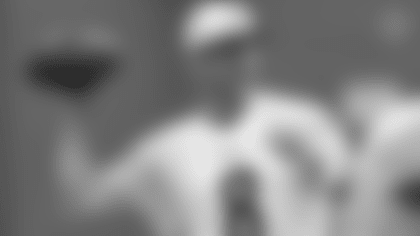LATROBE, Pa. _ The dynamic kickoff has been altered, the overtime procedure has been tweaked and the old-school chain gangs are being replaced.
Those and other changes in NFL protocol were topics of discussion when NFL referee Craig Wrolstad and members of his crew visited Saint Vincent College last weekend, as was the expansion of replay assist.
Beginning this season, penalty flags thrown for grabbing the face mask, a horse-collar tackle, tripping or hits to the head can be picked up in the event replay assist is presented with clear and obvious evidence no illegal contact was made.
"Replay assist is not putting the flag on the field at all, and that is very, very important," an accompanying video emphasized.
Wrolstad elaborated on his understanding as to why that's the case.
"The competition committee is composed of general managers, coaches, owners," he explained. "(Steelers head coach) Mike Tomlin's on that committee, this might be a better question from him. But from what I've heard is they don't want us throwing flags from the replay booth.
"The replay booth is connected to people in New York City who aren't officials. They basically want the game officiated on the field unless there's been a mistake that they can pick it up pretty easily. They don't want flags flying in from places unknown. Coaches don't want that, owners don't want that, general managers don't want that, flags coming in unknown like, 'Who threw that flag?'
"At least when we throw a flag they know who threw it and they can talk to us and have some dialogue. If it comes out of nowhere, they just tend not to like that."
Tomlin is all-in on expanding replay assist in such a fashion.
"I am," he emphasized. "It's about getting it right and getting it right with fluidity, so that the viewing audience doesn't feel the lag. Technology is a component of that. I think all parties involved are really comfortable with where we are. So, it's probably a really good thing."
As is the determination only to pick up flags, not throw them.
"We have zero appetite for adding penalties to the game," Tomlin continued. "It's about correcting the erroneous ones. That is our position, and that has been our position.
"To be quite honest with you, I don't see that changing."
The change applied to the dynamic kickoff places the ball at the 35-yard line following touchbacks on free kicks, not the 30.
Both teams are also now entitled to a possession in overtime in the regular season (as has been the case in the playoffs), with one notable if unlikely exception.
"If a team is able to hold the ball the entire 10 minutes, run it down and kick a game-winning field goal as time runs out, then the other team doesn't get the opportunity to possess,"Wrolstad clarified.
The new method of determining whether a first down has been made is about streamlining the procedure as well as accuracy.
"We still have a chain crew on the sideline," Wrolstad said. "They're still going to be there as the backup system. But we have a new system called the 'virtual measurement' that we tested in the preseason last year.
"I'll call timeout for a measurement on something that's close or if a coach has maybe requested a measurement, we'll measure, and rather than the chain crew coming out, we'll clear people away from the football. And they have camera system in each stadium that's designed to show whether they made the line to gain or not.
"I'll get a radio (message) at the same time they're showing it on the scoreboard. It'll pop up and say 'eight inches short' or it'll say 'first down' or whatever. And then I'll make that announcement, we'll let the coaches know and hopefully it'll be real smooth and it'll take like 30 seconds.
"We'll test it in the preseason, see if we can get that time down because that's the idea. The old, archaic system of running those guys out there and then running them back, sometimes it took two minutes. I don't think that's good television."














